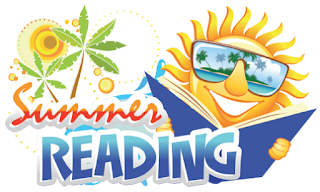Children enjoy swimming in the sea and building sandcastles. It is summertime! The parents and kids relax, but learning shouldn't stop. According to the foundation Reading is Fundamental, children who do not read over the summertime loss of reading fluency and comprehension skills. Students who read in summertime increase their reading skills. I found some great ways to keep children reading at this summer. This advices will be useful for teacher and parents.
- Choose books about outdoor activities. (It will be interesting for children but you must show that reading is important to you. Ask what they think about this book).
- Lead by example. (Parents or teachers must pick up a book on the way to the swimming pool or the park. Children that see their teachers or relatives reading are more likely to think of reading as a fun activity).
- Establish read-aloud routines. (You must choose the time for reading with children. Even if it is only for 5-10 minutes a day, try to make it part of enjoy routine).
Moreover, I have found article "Social reading tools for summer reading" on the Tarrant Institute for Innovative Education. The teachers and parents can use different tools for summertime reading. For example, I have found a lot of great book recommendations on the rest of GoodReads. GoodReads is a really powerful platform for keeping track of what child have read and how often.
Another great app is Litsy. It modeled on Instagram. The main idea of Litsy is that readers post photos from their reading lives and other readers like or comment on them. This tool can use children and students.
References:






